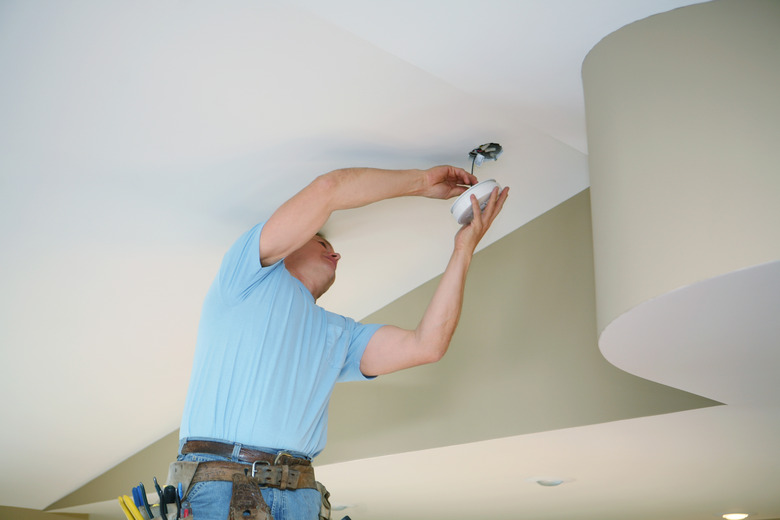Interconnected Smoke Alarm Failure With A Power Surge
We may receive a commission on purchases made from links.
Interconnected smoke alarms may be connected to an integrated system by the wiring in the house or a wireless connection. While this allows alarms to sound throughout the house in a smoke or fire emergency, it can also result in a system failure if there is a power surge or power outage. Whether the alarms are chirping after power has been restored or failed completely due to the surge, there are a few steps to follow to ensure smoke and fire safety in your home.
Types of Power Surges
Types of Power Surges
The primary types of power surges that may affect your wired interconnected smoke alarms include those inside and outside the home. Internal power surges are often related to appliances, such as refrigerators, washers, and window air conditioners, kicking on and off. A momentary power drop followed by a surge of electricity in itself is not usually damaging. However, repeated surges can damage your appliances, including your smoke alarm system. You may also have intermittent outages due to loose wires and bad connections in your wiring and electrical system.
Brownouts and blackouts, whether they affect only your home, the neighborhood, or an entire city, have a similar effect on appliances and smoke detectors. While it's not practical to disconnect wired smoke alarms, do take time to turn off and unplug your other electronics and appliances to reduce the overall damage that may be caused by a power surge when power is restored.
Lightning strikes cause massive spikes in voltage, which travel along metal towers and power lines. Though most utility companies incorporate protective measures in their power grids, a lightning strike that knocks out a transformer can also result in a power surge that damages electronics and smoke detectors. Like brownouts and blackouts, prevent damage by unplugging as many electrical devices as possible when thunderstorms are nearby.
Resetting Smoke Alarms
Resetting Smoke Alarms
After the lights flicker, fade, or completely go out, when the power comes back on, the resulting surge may result in chirping smoke alarms. If the smoke alarm chirps several times and then stops, it is warning you that the power was off, that the alarm was on battery power, and/or that main power has been restored. Check the smoke alarm by pressing the "test" button. The alarm should sound and then stop, indicating that it is working properly.
If it continues chirping, check the backup battery. Open the smoke alarm and remove the battery. Put the same battery or a new battery back into the battery compartment and press it firmly onto the terminals. Close the cover securely. When resecuring or changing the battery doesn't work, you may need to reset the smoke alarm.
Turn off the power at the breaker box and then take the smoke alarm off its mounting bracket and disconnect it from the wiring harness. Remove the backup battery if it is removable and then press the test button for 15 to 30 seconds until the alarm sounds or chirps and then stops. Replace the battery, reinstall the wiring harness, and reattach the alarm onto the mounting bracket. Turn the power back on at the breaker box.
Replacing Smoke Alarms
Replacing Smoke Alarms
Smoke alarms are good for up to 10 years. Some models include a nonremovable 10-year lithium battery. If one or more of the smoke alarms are still chirping after you've changed any removable batteries and reset the units, it may be time to replace all of the smoke alarms in the house.
While you may be able to purchase new smoke alarms that plug into the old wiring harness, consider checking and/or replacing the harness to avoid any interruptions in your home safety. Don't forget to change the carbon monoxide detector every five to seven years or purchase wired combination units that detect both smoke and carbon monoxide. Once reset or replaced, test your smoke alarms monthly.
In addition, if brownouts or blackouts are a common occurrence, consider calling in an electrician to install a whole-house surge protector. This unit is installed at the main breaker box to protect the 110- and 240-volt circuits, including your wired smoke alarms.
